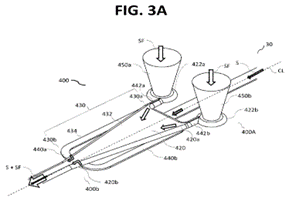The US Court of Appeals for the Fifth Circuit revived a hotel group’s federal trade secret suit against two former employees, finding that the district court did not have enough information to conclude that the hotel group improperly split claims between federal and state actions. Armadillo Hotel Group, LLC v. Harris, Case No. 22-50945 (5th Cir. Oct. 20, 2023) (Smith, Southwick, Higginson, JJ.)
Armadillo Hotel Group is a buyer and operator of modular and mobile structures throughout North America. According to Armadillo, it hired Todd Harris and Jason McDaniel to oversee Armadillo’s construction operations and its hotel, food and beverage operations. The relationship deteriorated after a few years, leading to Harris and McDaniel’s resignations.
Harris and McDaniel subsequently sued Armadillo Hotel Group Management (AHG Management) in Texas state court alleging that they entered employment agreements with AHG Management as part of the joint venture, but AHG Management breached these agreements by failing to pay the agreed upon salary, bonuses and profit-sharing interests. The precise relationship between Armadillo and AHG Management is unclear. AHG Management filed counterclaims, agreeing that it hired Harris and McDaniel but arguing that they breached their fiduciary duties by failing to devote their full attention to their responsibilities and diverted business opportunities to their own companies, which allegedly competed with AHG Management.
The parties conducted discovery in state court, after which AHG Management filed an amended counterclaim in state court, removing its claim against Harris and McDaniel for improper expropriation of proprietary and confidential documents. That same day, Armadillo filed a complaint in federal district court against Harris, McDaniel and several new parties, including Southeastern Disaster Relief Services (SDRS), a business affiliated with McDaniel; Battlement Mesa Consulting, LLC (BMC), a business affiliated with Harris; and Grand Majestic Lodge (GML), a competitor of Armadillo. Armadillo’s complaint alleged that Harris and McDaniel misappropriated trade secrets that they shared with SDRS, BMC and GML during and after their employment with Armadillo. The complaint also included claims under the federal Defend Trade Secret Act (DTSA), alleging that the five defendants conspired to misappropriate the trade secrets.
Harris, McDaniel, SDRS and BMC moved to dismiss the federal complaint for impermissible splitting of claims relating to Harris and McDaniel’s employment between the state court proceedings and this new federal lawsuit. The district court granted the motion with prejudice. While acknowledging the “apparent difference between Defendant AHG Management LLC in the state-law action and Plaintiff Armadillo in [the district court] case,” the district court found that the prohibition against claim splitting applied because the same claims were first removed from AHG Management’s counterclaim in the state court proceedings and then asserted by Armadillo in the federal action. The district court also found that the claims arose out of the same nucleus of operative facts—Harris and McDaniel’s employment—and shared a common factual predicate. Armadillo appealed.
The rule against claim splitting prohibits a party or parties in privity from simultaneously prosecuting multiple suits involving the same subject matter against the same defendants. In situations where a [...]
Continue Reading
read more

 Subscribe
Subscribe



